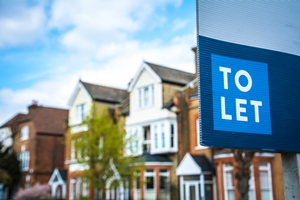Interested in buying overseas property primarily as an investment? Then you need to be buying with your head and not your heart. Here are some key pointers…
Get on top of the figures
Wherever you’re buying property, you need to ensure you’re in business mode from the get-go – not holiday mode. You’re buying as an investment, so your property needs to deliver in terms of numbers, which means a positive cash flow and a healthy balance sheet. Net yield will be key to your decision-making. For any property you consider, do some key sums and simulations. You’ll have expenses to cover, which will vary by destination and property type, and will include some or all of the following: mortgage repayments, taxes, insurance, administrative costs, managing agency fees, ongoing maintenance and community fees/ service charges.
Research local yields and speak to established property agents. Does the predicted gross rental income support these costs comfortably enough to net you a decent return and meet your personal objectives?
Avoid currency wastage
The likelihood you’ll be working between two currencies is high, especially if your investments span multiple countries. This introduces a whole new variable and potential risk. Successful investments cut out unnecessary expenditures, such as overpriced agent’s fees, vacant periods and inefficient tax structures. Poor management of currency payments should be treated with equal severity. From your initial transfer of capital to smaller, ongoing transfers, such as repatriating income, your hard-earned returns could be exposed to volatile exchange rates. Smart Currency Exchange has solutions to minimise this, including forward contracts and regular payment plans. These can be customised to fit your personal requirements. Why risk spoiling a high-yielding foreign investment by failing to protect yourself from currency movement?

What type of property will you invest in?
Tourist or residential market?
Traditional investment properties target either short-term tourist rentals or long-term residential lets. There are pros and cons to each and not every property will be suitable for both types. Short-term rental (STR) properties, such as Airbnbs, tend to have higher potential returns and offer the flexibility of personal use, but they come with higher set-up and running costs and are management-intensive and higher risk, thanks to being reliant on tourism. Long-term lets are lower yielding but also lower risk, given they serve the residential market by bringing in regular income, and need less management.
That said, the best high-yielding short-term rentals have occupancy levels throughout the year and span more than one season. Meanwhile, a property in a tourist area popular with foreign expats and holidaymakers might appeal to long and short-term renters.
Remember rental rules!
Be wary of regulations for both types of rentals and check you are comfortable with them. Short-term holiday rentals typically require a licence and to be registered with the local authorities. In some areas where there is a high concentration, new licences are being suspended due to pressure on the domestic housing market. On a more local level, it’s not uncommon for communities or complexes to have the power to restrict holiday rentals. For example, Florida controls its tourist accommodation markets by zoning areas and communities where short-term vacation rentals are permitted. For long lets, find out about local tenancy rights, landlord obligations and rules governing rent caps – guaranteed they will be different to the UK.
Location guide
Many of those investing in real estate choose to buy in a location they love and know well, so should already be familiar with the best areas for rental properties. If you’re buying somewhere you don’t know, research is crucial as is finding an experienced local agent. Key to any rental property is seasonality and proven occupancy levels. Cities are good for year-round bookings.
Spain’s go-to areas for holiday rentals are the Costa Blanca and Costa del Sol and for cities, there is Valencia, Madrid and Málaga, also options for residential lets. Short-term rentals are restricted or getting more difficult in terms of red tape in Barcelona and parts of the Spanish islands.
France’s rental market is especially diverse, with dual-season ski properties in the Alps (and Pyrenees), beach resorts along its Mediterranean and Atlantic coastlines, and scenic and culturally rich inland areas, such as the Dordogne, Limousin and Provence.
In Portugal, the Algarve’s world-class golf courses ensure strong occupancy levels outside of the summer season, while year-round coastal cities like Lagos and Portimão could suit short and long-term rentals. Meanwhile, an alternative to Lisbon could be the increasingly fashionable Porto in the north.
Italian cities Milan, Florence and Bologna have equally strong rental markets as the popular tourist areas of Tuscany, the Lakes, Umbria and Puglia. While Cyprus’s hot spots are Paphos town, Limassol and Larnaca.
Meanwhile, across the pond in Florida, the year-round sunshine combined with the famous theme parks mean occupancy levels are some of the highest. No less than six Florida destinations featured on AirDNA’s ’25 Best Places to Invest in Short-Term Rentals in 2024’, namely Spring Hill, Winter Haven, Fernandina Beach, Cocoa Beach and Bradenton and Largo.
For guidance on sending money overseas or to learn more about investing in another currency, register with Smart Currency Exchange today or call your account manager on 0808 163 0102.
For guidance on buying property abroad, head to PropertyGuides.com for insight into all your favourite areas, from Normandy to Tenerife.






















